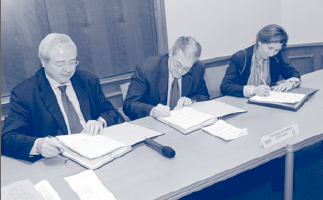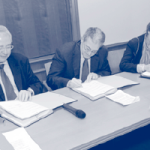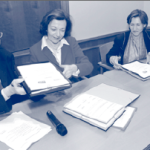The recently decentralized STIF had its Council adopt unanimously in February 2008 the new contracts with RATP and with SNCF for the period 2008-2011. For the 4 years period, the compensation will reach €6bn for SNCF and €7.3bn for
RATP (VAT not included).


The contracts enhance the partnership between the authority and the operators and display mechanisms able to progressively increase the services and better monitor their quality. While the operator are responsible for achieving set objectives they nevertheless enjoy a remaining space for entrepreneurship and commercial benefit.
Four main targets have been set:
– Strong emphasis on the level of provision
– Higher standards of Quality of service and punctuality
– Ambitious level of investments customer oriented
– Incentives more attractive for the operators
- Decisions to reinforce the provision of specific services will be more efficient by monitoring thoroughly line by line the performances of the sub-networks (eg: evaluating the performances of the 14 lines of metro where previously
one consolidated figure was given for the whole metro sub-network) and paying greater attention to peak hour
performances. Besides, services in deprived areas will
be reinforce so as to enhance social inclusion and sub-local bus networks interconnections will be improved.
- The number of indicators to monitor the overall performances of the operators have been significantly increased (89 indicators for SNCF and 65 for RATP), mainly in the field of punctuality, travelers information in particular in case of disruption of service, customers assistance, availability of specific equipment such as lift in stations with a maximum delay for maintenance and repair. Also provisions for actions related to safety and prevention have been laid out in the contracts as well as environmental concerns such as a carbon assessment. Last but not least, in accordance with the 2007 Law on social dialogue and continuity of delivered public service, the operators commit themselves through the contract to deliver 50% at least of the normal service of each sub-network on peak hours for RATP and for SNCF a minimum of 33% going to 60% of the normal service, according to the seriousness of the conflict. Performances will be evaluated also by a yearly customer satisfaction survey and regular assessments will be undertaken by STIF.
- An ambitious program of €7bn of investments over the contract period, and notably €2,5bn for the renewal of the rolling stock: trains, metros and
buses. For SNCF it amounts to €1,7bn (€1,1 in the previous contract) priority is
given to new rolling-stock among which the Bombardier NAT-Francilien and high capacity automotives AGC-to the refurbishment of the stations and to real time information and accessibility equipments. For RATP it amounts to €5,3bn (€3,4bn in the previous contract) out of which €1,5 is dedicated to renew the rolling stock (metro, RER trains and buses). The priorities are given to the improvement of metro line 13 particularly crowded, and a fully automatic operation of metro line 1.
- Finally the new contracts while ensuring a greater financial efficiency of public subsidies offer better incentives to operators. Transparency is increased by introducing in the compensation a distinction between operational cost charges and investment cost charges, and also by highlighting specific compensation for public service obligations. The compensation doesn’t include fare revenues directly perceived by both operators (the total amount to €12.3bn for the 4 years period), it doesn’t include either the incentives
nor the bonus-malus mechanisms.
As for incentives, they are of two sorts:
– An incentive based on the increase of fare revenues coming from a higher number of passengers this additional revenue is shared between the authority and the operator. Also within 2009, an incentive on passenger traffic at RATP will be calculated based on the counting of passengers.
– An incentive based on quality performances with a bonus-malus mechanism. The bonus for example can reach as much as €23m for SNCF (€8.5m in the previous contract) and as much as €25m for RATP (€13m in the previous contract).
The contracts foresees a result before incentives of €24m for SNCF (VAT not included) versus €11m in the previous contract and €66m for RATP (VAT not included) versus €23m in the previous contract.

